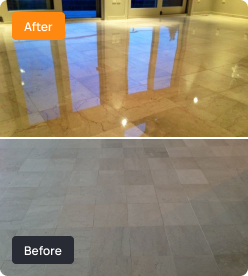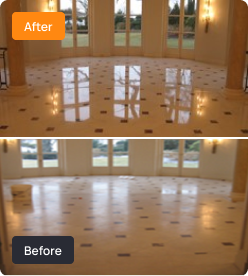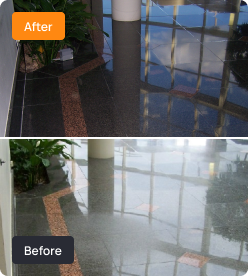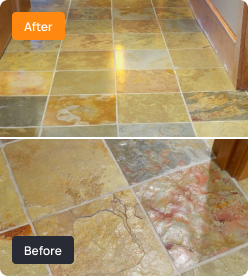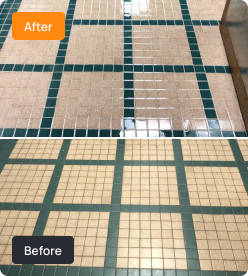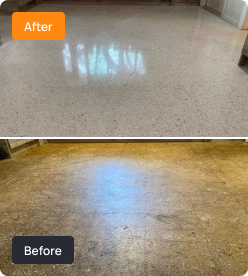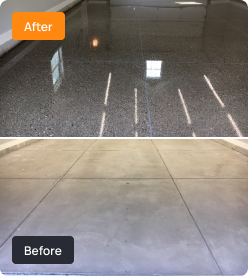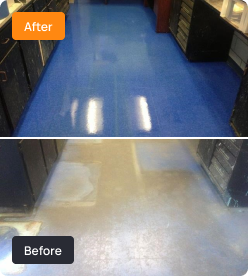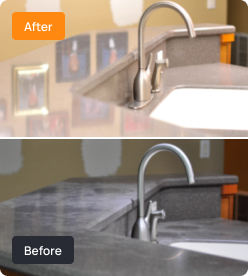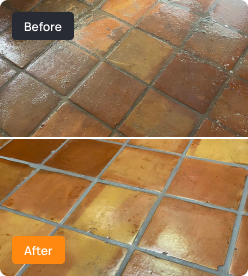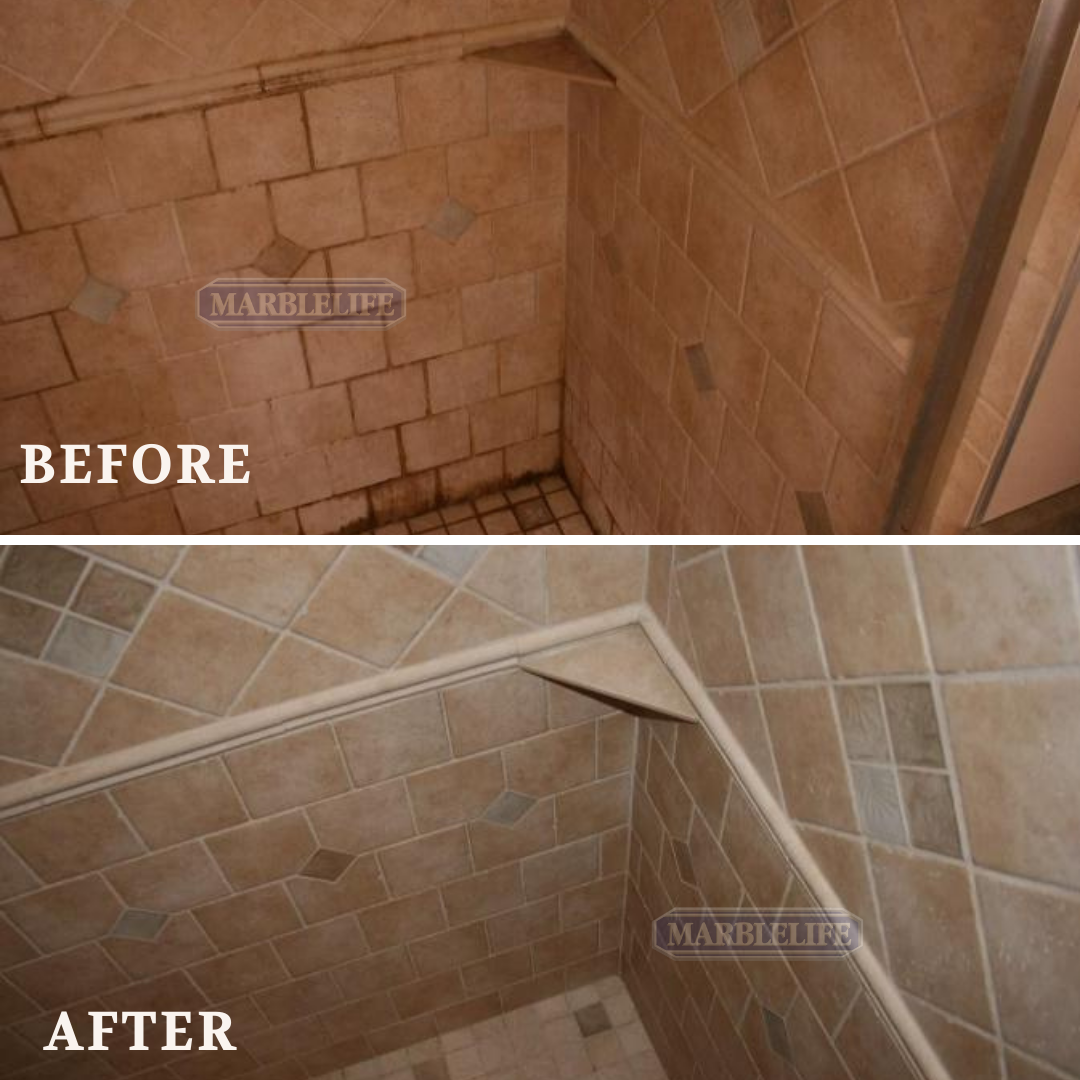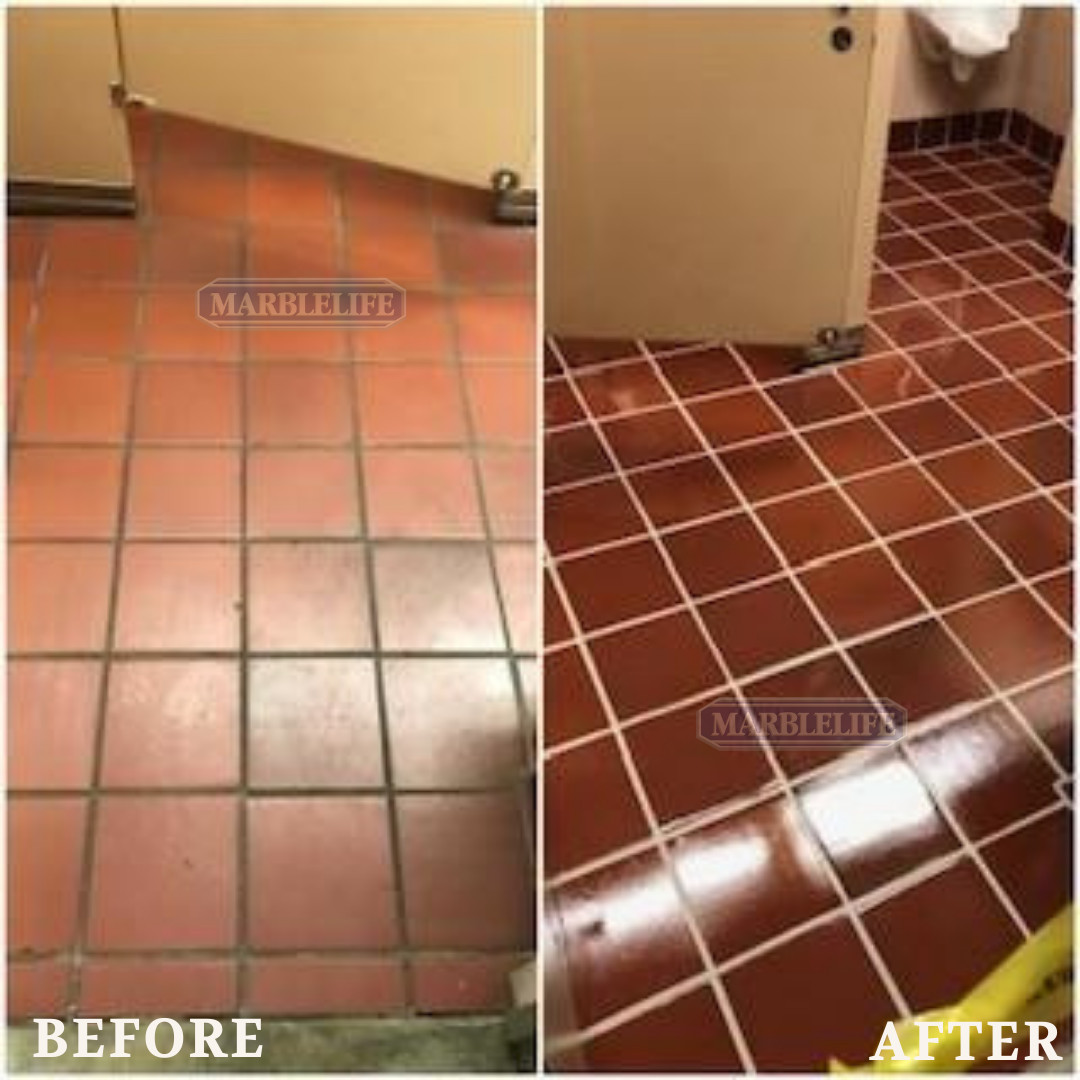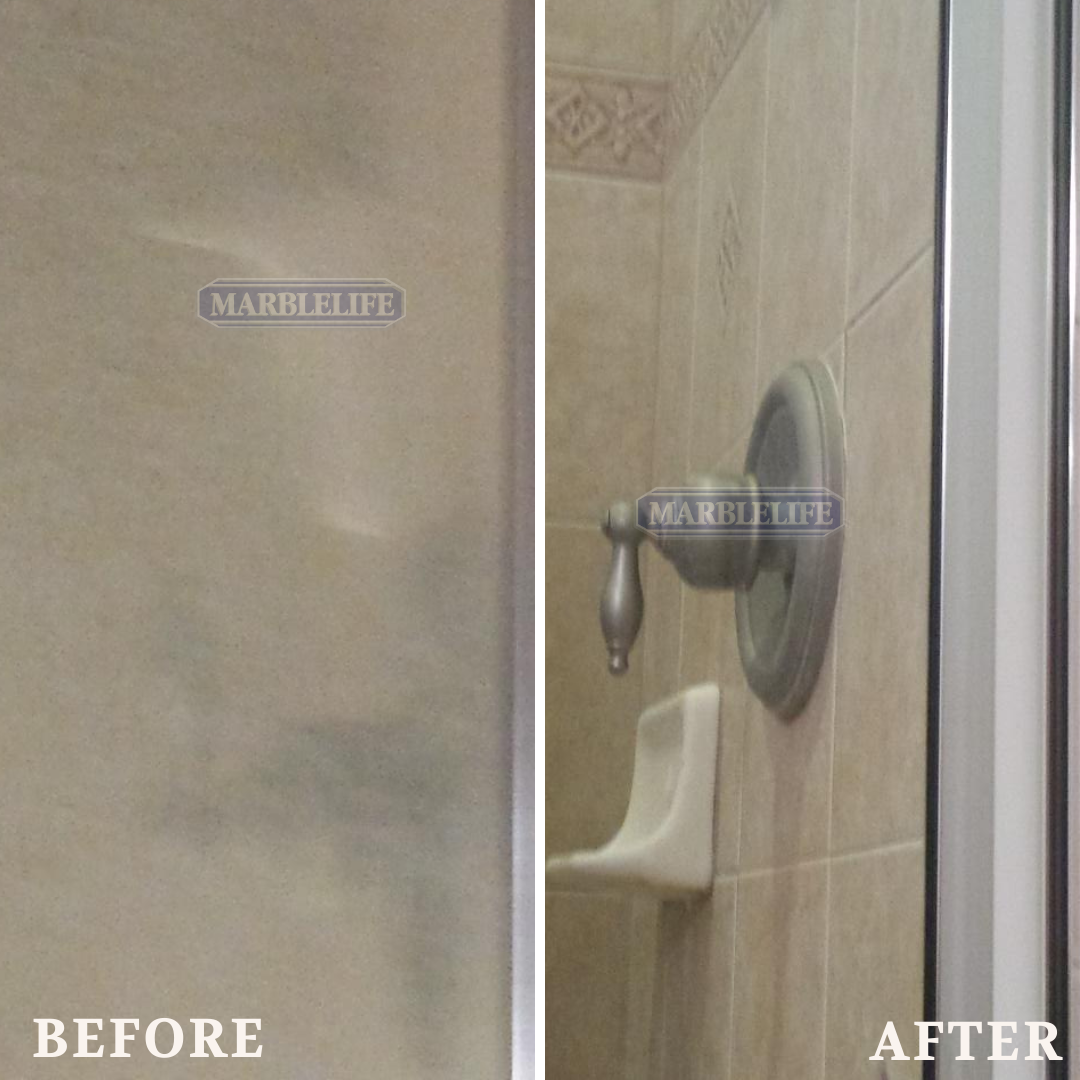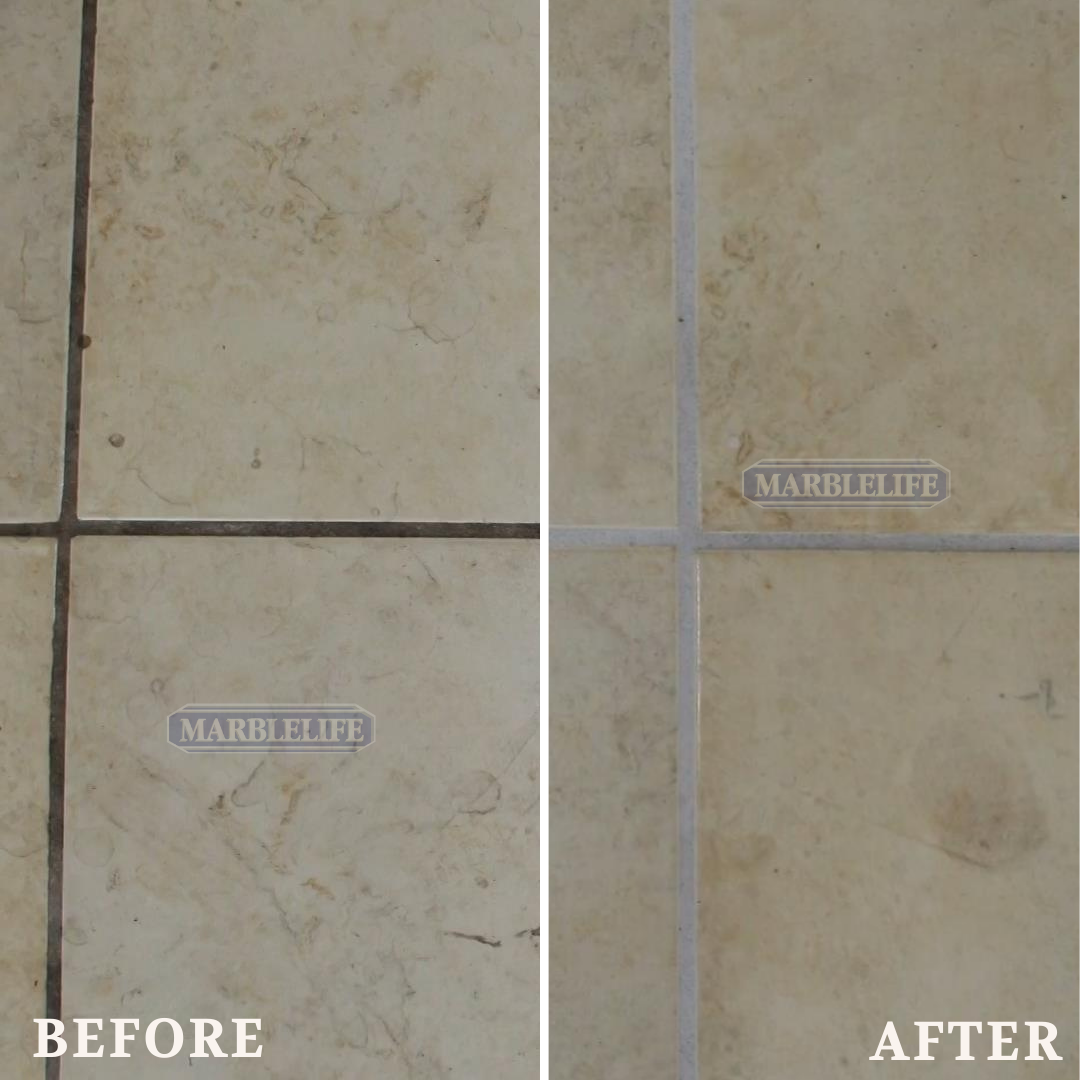Tile and Grout Cleaning vs Repair: How to Determine What Your Floor Need?
Got dull-looking tile and grout in your bathroom and kitchen but not sure whether to go for tile and grout cleaning or repair? Let’s have a closer look at what makes these two tile and grout cleaning services different from each other and how to choose the right one for your home. But first, […]
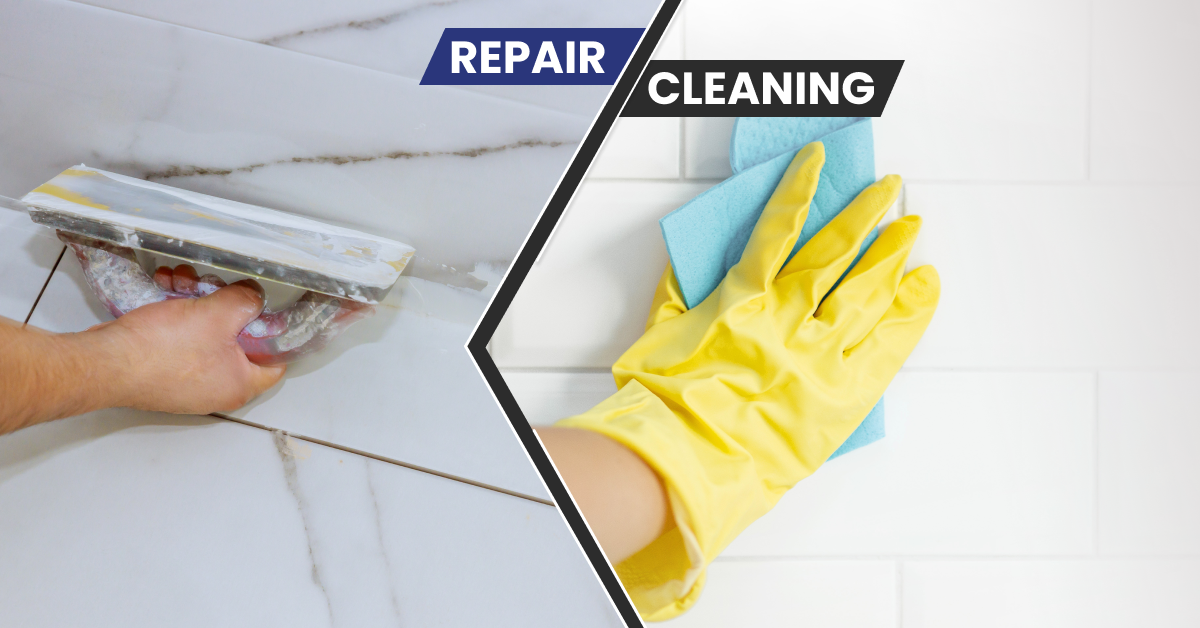

Got dull-looking tile and grout in your bathroom and kitchen but not sure whether to go for tile and grout cleaning or repair?
Let’s have a closer look at what makes these two tile and grout cleaning services different from each other and how to choose the right one for your home.
But first, why do you need tile and grout cleaning or repair services at all?
There is no denying the importance of grout in a bathroom or a kitchen. It can define the character of a space by lending a unique blend of contrasting shades, creating a beautiful rhythm between different portions of surfaces.
The grout’s job is to hold the tile in its place and bring out the best in the tiles and stones it surrounds.
Sanded and Non-Sanded grout, used as a filler between each tile, is naturally highly porous, making it prone to absorbing grease, stains, grime, and dirt. An unclean grout can also become a breeding ground for mold and mildew.
A dull darkening hazy layer on your grout indicates that your floors or bathroom walls need more than cursory sweeping.
This is different from a haze on the tile along the grout lines. Discoloration along the grout line is often present just after new grout has been installed, as a result of excess grout on top of the tile.
This haze can be removed with a buffer or cleaner.

Expert tip: Beware of using a masonry cleaner to resolve these grout lines, however as this aggressive acidic cleaner will also remove the grout seal that was just applied to your grout.
Grout repair, grout replacement, grout sealing and cleaning are distinctly different processes. Each has a time, place and purpose for maintaining a quality tile floors appearance.
Understanding the role each of these plays is the difference between frustration because of dirty grout and maintaining that quality look you saw the day after installation.
Grout Repair: Signs Your Bathroom Walls Require It
Repairing or replacing damaged or missing grout involves filling the gaps between tiles to restore the pristine look of the tiled surfaces and prevent further damage or displacement due to water seepage or other environmental factors.
Why does grout become damaged?
Grout can become damaged over time due to regular wear and tear, moisture, improper installation, or building or wall movement.
The most important factor here is to determine the true root cause, else the reason your grout failed is likely going to be the same reason your repair fails.
If grout is cracking due to movement in a wall of floor, until this surface is shored up, your repair is likely to crack again.
If the issue was due to installing grout before it was thoroughly wet and mixed OR after it started to dry, then the grout may have been weakened and a repair should be effective.
What are the telltale signs of grout damage?
What is certain is that failure to repair the grout allows water to penetrate behind the tile and wall, where it can do damage or create a mold problem.
Whatever the original cause, the repair is easier than having to deal with the consequences of failing to repair.
When in doubt you can always call a tile installer or tile restoration expert, but you do need to take action.
Here are some signs that your tile and grout may need to be repaired, replaced, or modified.
A buildup of mold: The usual suspect
Spotting mold in grout lines is not an uncommon sight, considering the bathroom’s high moisture level.
Typically, grout replacement is not required because of mold but rather when the underlying issue necessitates access for repair.
Caulk replacement may be necessary if the mold has been established behind or underneath the caulk.
Tile orientation can also contribute to mold issues. Grout that runs downhill towards the drain can drain more easily than grout that is perpendicular to the direction of flow towards the drain effectively acting as a dam rather than a conduit. Redesigning the tile layout can help here.
Preventing Mold on Tile and Grout
In most cases, you can control the mold using an appropriate mold-and-mildew-stain-removing-cleaner. MARBLELIFE’s TileLok provides a protective mold-resistant coating that is entirely inorganic and will not allow moisture penetration.
However, it leaves a slightly glossy look, which everyone might not like.
A permanent solution will involve determining where the moisture comes from and whether you can reduce or accelerate its evaporation. The approach to achieving this goal may vary, depending on the specific circumstances, such as the size and frequency of shower use.
For instance,
-
- If three family members are using a single shower three times a day, it may be necessary for one of them to use a different bathroom to allow enough time for the shower to dry out properly. Doing so can help prevent issues with moisture and mold growth.
- Another option is to stagger the shower usage for adequate drying time between each use.
- Using exhaust fans and leaving the bathroom door open can also help reduce moisture buildup.
- It is worth noting that mold can also originate from water leaks, which may necessitate more invasive search-and-repair procedures.
Cleaning Mold Off Tile and Grout
The simplest solution is cleaning with an appropriate cleaner. If this was easy to clean this would be less of a concern.
What people fail to realize is that there is a “best” solution for every problem, and not all cleaners are good at removing mold. Furthermore, this is a case where the AGE or FRESHNESS of the cleaner can play a factor.
Cleaners that contain waxes such as all-purpose cleaners can work against you here. Depositing a film of wax on the surface to help make it shiny serves to trap mold beneath it. Such cleaners are inappropriate here and do more harm than good.
An effective mold stain remover likely includes a chlorinated active ingredient. This class of chemicals breaks down over time and in the presence of light, as such the cleaner that worked great last month may not work as well this month. Buying in bulk won’t work.
Generally fresh is best in this space. Buying more frequently in smaller quantities can actually help.
Other signs of Tile and Grout damage
1. Loose Tiles: Mortar keeps the tile in place. Grout fills the space between tiles and helps prevent water and other liquids from getting beneath your tiles.
If your tiles become loose, the grout and the mortar have failed. You should call a professional to replace them. Such an issue may arise if the mortar can’t dry at application or is not mixed adequately before tile installation.
2. Cracks in the Grout: Even a tiny crack in your grout can allow water to seep in and cause damage or mold problems. If your grout has cracked, it is essential to ascertain the reason.
If a newly constructed building settling causes the crack, once the building has settled, repairing the now-settled crack will likely yield positive results.
If the crack appears on an inadequately reinforced floor over a basement that flexes underfoot, any attempt to fix it will lead to another crack until the floor is reinforced.
Fixing the underlying issue will require more extensive work that goes beyond the capabilities of a cleaner or tile installer.
4. Missing or Worn Grout: If significant dips and cracks are visible on your grout, it is time to repair it with a professional stone restoration company.
Typically, grout is recessed from the surface. This means that “worn” grout is generally the result of an over-application in a spot area where the grout is now flush with the tile surface.
This can occur because of excess grout or because the tile is tipped or set lower than the rest of the floor. This can generally be remedied with a spot grout replacement or, if the tile is uneven, replacing the tile.
The exception is if you have a natural stone floor, and it has been “leveled to the grout lines” to create a single flat perfectly reflective plane then all the grout lines are even with the tile surface by design.
Tile and Grout Cleaning: An Effective Treatment for Dull & Discolored Grout
If your home’s tiles look dull and dirty, and you have struggled to clean them, stained grout may be the reason. To restore the tiles’ clean-new appearance you may need a power wash cleaning, followed by a seal or ColorSeal grout treatment.
Choosing an appropriate cleaner
Grout cleaning involves removing dirt, oils, soap scum, mold stains and mildew from the grout’s surface. It would be great to find that wonder cleaner, but in truth each of these elements may require a specialty solution from time to time between daily cleanings.
A properly cleaned grout should have its original color and consistency. Cleaning grout means first getting to the grout. This means you have to account for soap scum building up, over mold and mildew stains, before you can clean the actual surface of the grout.
If your grout is unsealed or the seal has failed, getting the dirt out of the open grout pores can be like trying to clean the bottom of a test tube with a sponge, you are going to need the right tool or cleaner to get in there and flush the pores.
A deep cleaning that lifts the dirt out of the open grout pores before resealing is the way to go here.
How do you know if your grout is unsealed?
If you can see grout surface (the original color) but it is still looking stained and dull it’s a good sign your grout seal has failed.
If you have used an acidic cleaner such as vinegar, lemon-fresh or citrus scented cleaners – you have introduced an acid (which has stripped off the protective sealant from your grout).
If you have used vinegar to clean grout lines, you have leached dye from the grout to make it “look lighter” but have damaged the seal.
If you have used a fruit botanical shampoo – yup, acid.
If you have been using an all-purpose-cleaner or a glass cleaner, you have been covering dirt with wax making it more difficult to clean later.
There is a lot going on in these grout lines. Once we have gotten back to actual grout then we can speak to sealing it.
This is an important step in cleaning as it ensures everything is kept above the grout surface where it is easy to clean.
To seal or to ColourSeal?
Here is an important decision: to seal or to Colorseal?
The traditional penetrating sealer works very well, if one does not use an acidic cleaner later. However, if you want a perfect new appearance, and freedom to use whatever cleaner you would like, you are going to need MARBLELIFE COLORSEAL.
Once installed, you can introduce acidic cleaners without fear, or use vinegar if you choose (we still believe there are better options).
You can have ColorSeal if the grout remains stained after cleaning. It involves replacing the original seal with a non-acid sensitive, colorable seal that can restore a consistent, clean appearance and even change the grout’s color.
ColorSeal may be the most important development in grout care history. In the future, ColorSeal will likely become the standard means of sealing grout and the primary way that color is introduced to grout lines.
Signs your grout needs a deep clean
1.Discoloration: Sometimes, your tile and grout can look dull because of the build-up of dirt, oil, soap scum, hard water, and mold-and-mildew-stains and cleaner introduced waxes.
2. Mold and Mildew: Exposure to high humidity levels and lack of proper ventilation in the bathroom or kitchen can give birth to the problem of mold and mildew.
People not living in a humid climate can also face this issue due to condensation from the pipelines, ductwork, and water heaters, which can create a moist environment suitable for the rapid growth of mold and mildew.
3. Uneven color of grout: If you notice that the color of your grout is not consistent throughout the tile floor, it’s a sign that dirt and debris have penetrated the grout and have become difficult to remove.
Maintaining your grout seal
The theory is that one should be able to restore the grout to its original color.
However, this doesn’t always work, there are no guarantees that grout staining can be reversed, and you might end up with grout that looks cleaner but is still not uniform.
This is why maintaining one’s grout seal is so important. It is also where the ColorSeal systems comes in – it can add color to the grout and seal the open pores with an acid-resistant sealer that brings back a uniform, clean appearance.
Once your grout has been ColorSealed, it will look better than new and won’t be damaged by acidic cleaners, hair products, or soap.
Cleaning your grout
These things can sit on top of the grout and make it look dirty. Each of them can be removed, however you would be hard pressed to find a single cleaner capable of tackling each of these challenges effectively.
Using specialty cleaners designed to tackle each of these problems individually is the best way to approach this problem.
Once these impurities are removed, a daily cleaner can manage the surface. Grout care becomes much simpler when one thinks about all that is going on here.
Soap Scum and Mold Stains will generally benefit from a targeted cleaner. Order or approach matters. Soap Scum needs to come off first, then one can address mold-and-mildew stains, and finally the grout surface itself and if unsealed what is in the grout pores.
If your grout isn’t sealed, you may need to power wash it to clean out the open grout pores, after which it needs to be resealed or else some pores will refill with dirt.
MARBLELIFE® grout cleaners
Using specialized products like MARBLELIFE® MAXOUT GROUT Cleaner, you can deep clean your tile’s grout at home.
This product helps keep the discoloration away without harming the surface. Once cleaned, reseal with MARBLELIFE® STONE OR GROUT CLEANER to prevent dirt from re-penetrating the grout line.
Then maintain the consistency with MARBLELIFE® TILE & GROUT CLEANER, formulated to quickly clean dirt and natural oils from the tile and grout surface.
If you discover that the grout remains stained, consider having MARBLELIFE® COLORSEAL applied.
As previously mentioned, this product allows you to recolor the grout to your desired accent color, which matches the new blue curtains and towels.
Additionally, this product restores a uniform and consistent appearance without the expense, mess, or disturbance associated with grout replacement.
MARBLELIFE® Mold and mildew cleaners
If you want to clean bathroom tiles at home, use products like MARBLELIFE® Mold & Mildew Stain Remover. It is formulated to be surface safe while efficiently removing those dark black and red stains associated with mold and mildew.
This product is so effective you can watch it work when applied to a surface caked in stains.
This is a case where fresh matters as the active ingredients in mold and mildew removing cleaners will break down over time, making the best performance the first performance.
If you are facing a recurring mold issue, consult a professional from a stone restoration company is best. They can often guide how to mitigate the problem to reduce the frequency of treatment required.
Tile and Grout Cleaning at Home: DIY Remedies
Although it is best to call professionals to clean and repair your tiles and grout, many prefer to clean them at home.
If you are looking for homemade remedies to revive dull and worn tiles, here are some simple ways to do it at home.
-
- A warm water spray is the simplest way to clean tile grout. Just spray water onto the surface and scrub it with a soft bristle brush. Wipe it with a clean cloth. This is suitable for daily cleaning of a new floor, but will struggle to address wax build-up, soap scum, or stained grout lines.
- DO NOT USE VINEGAR. This common household cleaning solution will remove your grout’s seal, leach color dye from your grout (often confused with lightening dirt) re-opening sealed pores, making your floor MORE susceptible to grout staining. Vinegar will also remove sealants from granite and can etch (dissolve) marble, travertine, terrazzo, and concrete surfaces, dulling them and leaving white marks in highly damaged areas.
Conclusion
Proper cleaning and maintenance allow you to keep your grout and tile floors, walls, or kitchen backsplashes looking new.
It’s essential to act as soon as you notice the visible signs to prevent further damage. Regular cleaning can help prevent dirt buildup and keep your grout looking its best.
Understanding what is happening in and on your grout is the first step to diagnosing your grout’s problem and formulating a plan of attack that can restore a “cleanable” surface.
Once clean is restored, maintaining it just requires a solid degreasing daily cleaner.


